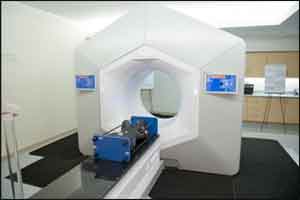- Home
- Editorial
- News
- Practice Guidelines
- Anesthesiology Guidelines
- Cancer Guidelines
- Cardiac Sciences Guidelines
- Critical Care Guidelines
- Dentistry Guidelines
- Dermatology Guidelines
- Diabetes and Endo Guidelines
- Diagnostics Guidelines
- ENT Guidelines
- Featured Practice Guidelines
- Gastroenterology Guidelines
- Geriatrics Guidelines
- Medicine Guidelines
- Nephrology Guidelines
- Neurosciences Guidelines
- Obs and Gynae Guidelines
- Ophthalmology Guidelines
- Orthopaedics Guidelines
- Paediatrics Guidelines
- Psychiatry Guidelines
- Pulmonology Guidelines
- Radiology Guidelines
- Surgery Guidelines
- Urology Guidelines
Are patients sufficiently shielded against stray radiation during CT scans?

Radiation exposure during diagnostic imaging such as computed tomography (CT) contributes to a small, but potentially preventable percentage of cancers, yet a new study reports that 40% of hospitals surveyed do not routinely utilize CT shielding. Overall, 99% of the hospitals were aware that shielding can safeguard patients and 84% believed it to be beneficial, so why isn't it being used more routinely -- a topic explored in the study published in Journal of Endourology, a peer-reviewed journal from Mary Ann Liebert, Inc., publishers. The article is available free on the Journal of Endourology website until December 21, 2017.
The article entitled "Prevalence of Protective Shielding Utilization for Radiation Dose Reduction in Adult Patients Undergoing Body Scanning Using Computed Tomography" was coauthored by Jaime Landman, MD and colleagues from the University of California, Irvine. In their survey of hospital shielding practices during CT imaging, the researchers focused on the protection of four radiosensitive organs: eyes, thyroid, breasts, and gonads.
For more details click on the link: http://dx.doi.org/10.1089/end.2017.0294

Disclaimer: This site is primarily intended for healthcare professionals. Any content/information on this website does not replace the advice of medical and/or health professionals and should not be construed as medical/diagnostic advice/endorsement or prescription. Use of this site is subject to our terms of use, privacy policy, advertisement policy. © 2020 Minerva Medical Treatment Pvt Ltd